Vladimir Zdraveski talks about the importance of the creative process and the medium of expression
Published on: 31.08.2022
The interview was conducted in March 2022 within the PrivatePrint Meets program and continued in August 2022 through electronic communication. Vladimir Zdraveski (b. 1996 in Prilep) talks about his young artistic practice, the topics of micro and macro reality that he deals with, the different media in which he expresses himself, as well as our collaboration at the exhibition (de)structural within PrivatePrint VR Studio 2022.
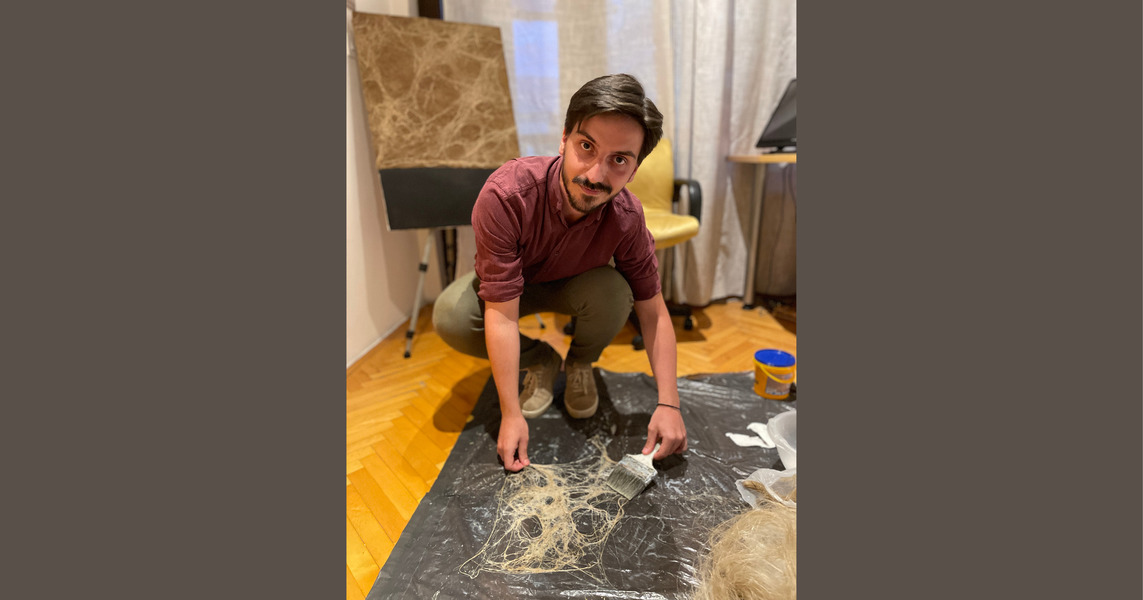
Vldadimir Zdraveski
Your first solo exhibitions (Micromanipulations in Prilep and In-between in Skopje, 2020) present the theme of the micro versus the macro realities as central. Consequently, the works treat organic visual forms. When did you start working on these topics?
During my studies, I started doing some initial research on neurons, specifically what neurons look like in people with certain mental illnesses. There was an image of a neuron in a healthy person and a person with schizophrenia. And I was intrigued by the difference and how unusual connections, atypical links, are built in them. This opened me up to questions like where and why exactly those connections happened. And it all started from here. I started painting, and what attracted me were the pictures and the drawings themselves. I continued to experiment and make associations of something resembling a nervous system, then a microsystem.
Then you started to move away from this initial image?
Yes, and to go deeper. And I thought I would come up with something more straightforward, but it turned out to be even more complicated.
And at that point, I started working on those micro-macro relations. Actually, I began to get out of the direct references to the nervous system and work by association to see where it would lead me.
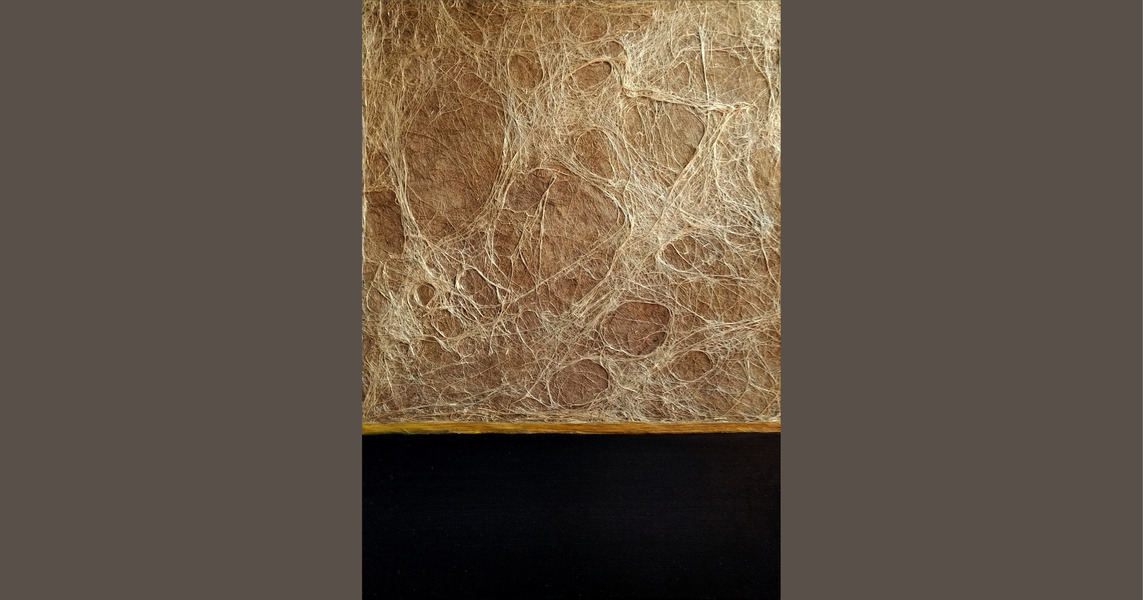
Vladimir Zdraveski, “Edge”, mixed media, 2022
Considering the subject you are starting from, the nervous system and mental conditions, is your goal that the viewer recognizes those images and their background?
Well no. It was just like a pure sensation, like a trigger, of what was happening inside us. We are interested in many things that happen around us, but we have not asked ourselves what is happening inside us. Something much bigger, much more important is happening. I aim to escape from any easy association with the thing. Because I am inspired by something factual, and if my idea were to present that fact, I would have shown it differently, with a photograph or the record itself.
What does your creative process consist of?
Essentially, I am inspired mainly by nature, from the systems in nature. If there is a system, there must be organs, and for the entire system to work, each organ must perform its function. And here are hidden the correct answers to many questions we ask ourselves of any nature: spiritual, political, cultural, and so on. What if we replace an organ with an institution? And we decide one thing to be a heart and another a stomach, and now we replace them, that is impossible. The heart can never be the stomach and vice versa, so each organ fulfills its function. This is a written code in all of us and in nature itself.
I rarely get attached to the medium or the materials. And I rarely stage a work. I believe the artist is just a channel through which it flows and is created. To me, it is a trinity; there must be some kind of universe, then you are the channel, and of course, you have a part in channeling it correctly.
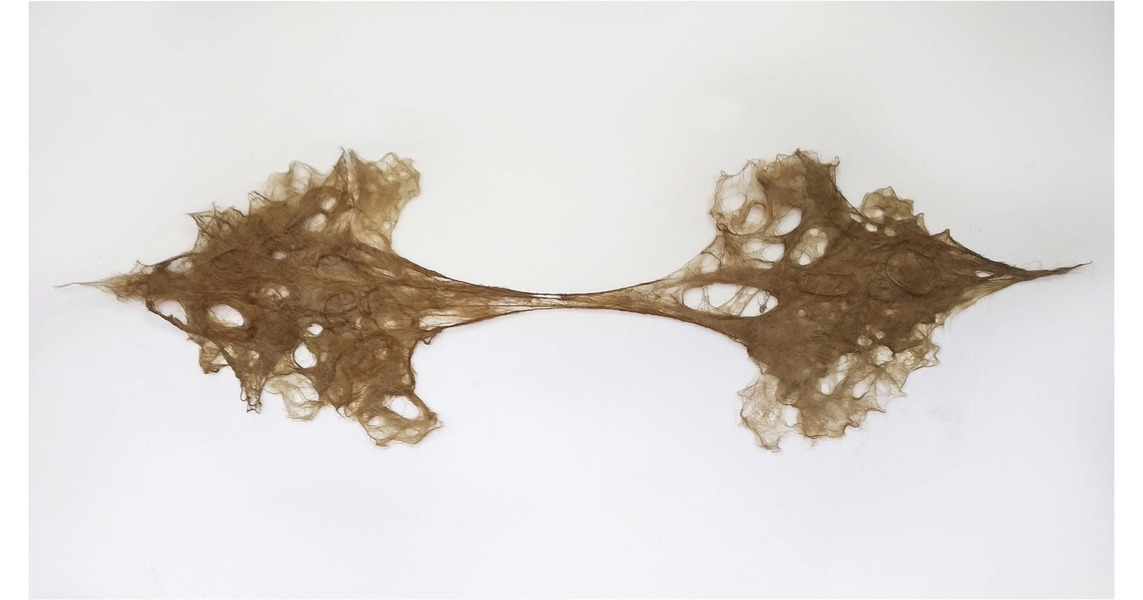
Vladimir Zdraveski, “The Process”, hemp, 2019
Are you saying the artist does not have a rational and conscious role in the creative process?
Aims to. But I'm not sure if it always hits the mark. I don't know if artists always achieve what they strive for or if they sometimes come up with something even better than they could imagine.
I believe that at the very moment when one creates, they can rationalize to a certain extent, to the extent of the material part, they decide whether the gesture should be sharper, softer or controlled or not controlled, whether they consciously choose to use blue color and so on.
I would say that it is controlled, but to say rational is a bit harsh. I don't think it can be only a rational process; if it is only rational, we can divert it to science.
What are your references? Do you read anything while creating?
More than reading, I watch films. Science fiction inspires me, and nature documentaries, everyday situations that happen beyond our knowledge in the universe. For instance, a plant growing. I find those things fascinating.
In what formats and with what materials and media do you work?
The medium is a challenge for me to find a way to express myself in that medium, and it is often a challenge for me because of the conditions in which I find myself. For example, if I had the conditions and a larger space, the space itself would allow me to deal with some larger projects. Previously, I lived in a much smaller apartment, so my formats varied with the space. I switched to my cell phone; I made changes directly on the phone or in Photoshop. And I open up new challenges.
The digital medium, in particular, gives many possibilities to some materially and physically impossible situations, like three-dimensional shapes in space, textures, or materials with colors that are difficult to achieve precisely as we imagine them.
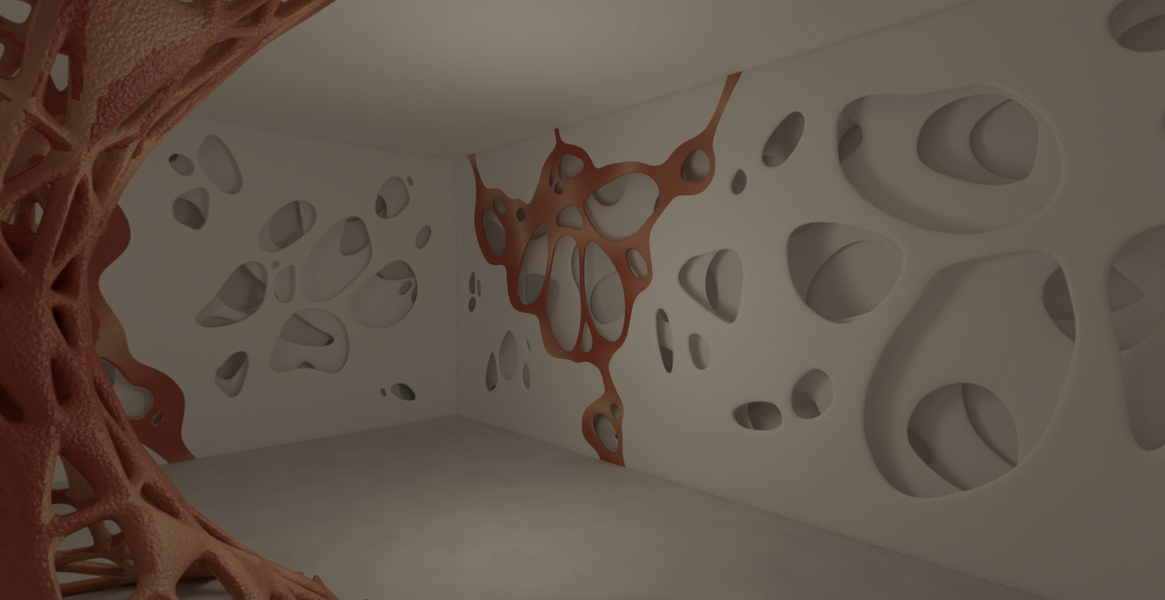
Vladimir Zdraveski, (de)structural, virtual exhibition, PrivatePrint VR Studio 2022
You worked with us as part of our virtual exhibition program, VR Studio 2022. So in this context, how does working in our virtual space fit into your existing artwork? Through the (de)structural exhibition, can you compare the experience of working in virtual and real space?
Virtual space was an additional challenge for me. Although I had experimented with digital media before, the experience was different this time. The fact that I knew the work was not physically present and tangible during the creation process is diametrically opposed to my daily practice. In this case, not only was my task how to project the work outside the physical space, but also how it would relate to the virtual viewers, which was an extraordinary experience for me as a creator in an actual physical space.
The idea of VR Studio is to be a collaborative project. The exhibition is created between the artist, the designer, and the curator, and the works do not exist outside the virtual space. How do you see these possibilities of extraordinary cooperation?
I would call this collaboration an artistic "triangle," in this case, it was really successful. If that triangle is "calibrated," the project would surely be successful. As for the non-existence of the work in the physical space, I think it is not a critical link in the communication process between the work and the viewer, especially in this digital age which is already a part of our everyday life. On the contrary, it allows an even easier way of "transporting" the work from one point to another in its original form.
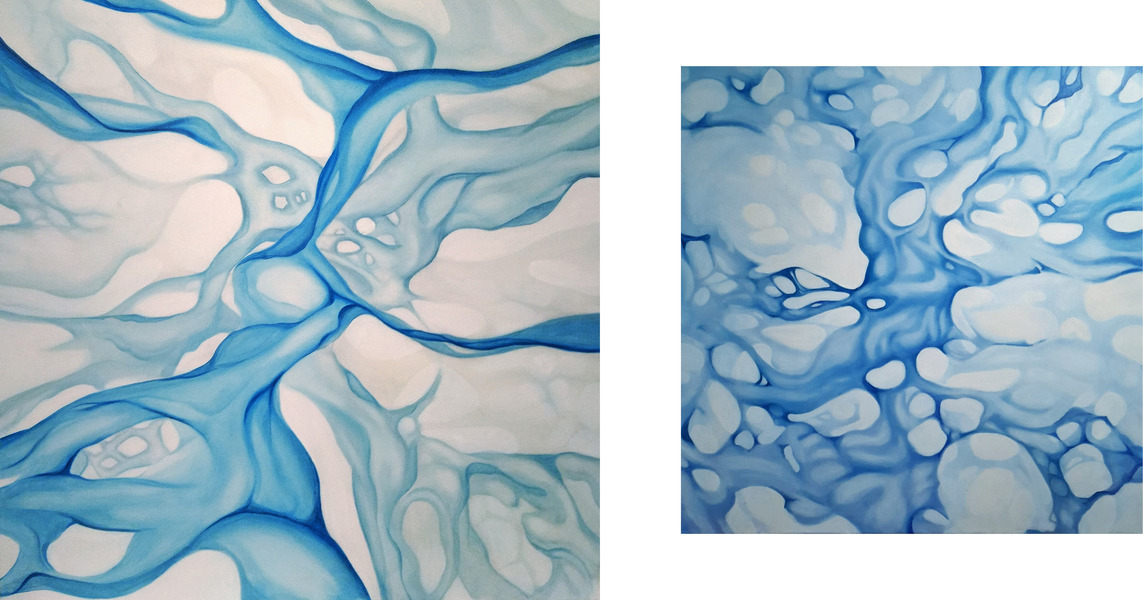
Vladimir Zdraveski, “Transpose II” and “Transpose III”, oil on canvas 2022
How do you further develop your central theme about the relations between the micro and the macro realities? What are you working on right now?
I'm currently in a period where I want to do all possible variations on this theme. During this period, I paint, work digitally, and mix them. It happens to be working on three pieces at once. I am working on a piece with hemp while painting on canvas, then working on something digital. However, the creative process itself is more important to me.
I work on different things, research, sketch, and experiment. I see how far I can take that theme for micro and macro relations, but it is also imperative not to go into visual conformism, which is common among visual artists.
The photographs of the works courtesy of the artist.
--
PrivatePrintMeets is a series of meetings with emerging artists from N. Macedonia and is part of PrivatePrint's project activities funded by the Prince Claus Network Partnership programme.
VR Studio 2022 is co-financed by the Ministry of Culture of the Republic of North Macedonia and made possible through our activities in the PrivatePrint Meets series funded by the Prince Claus Network Partnership Programme.